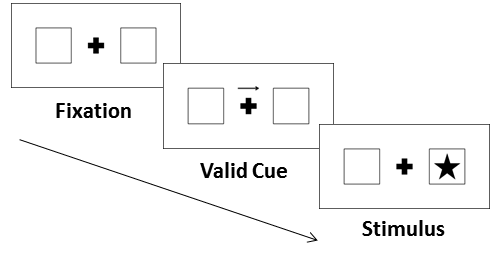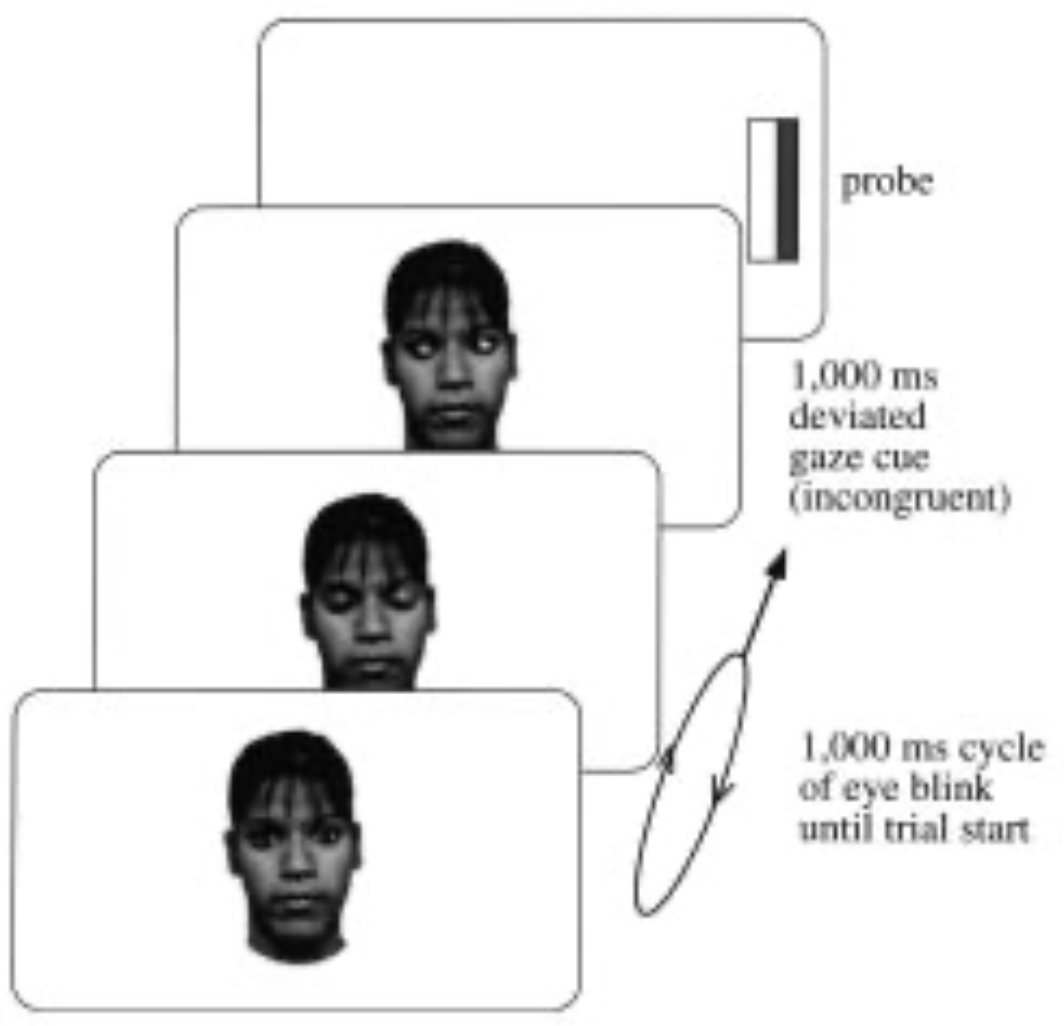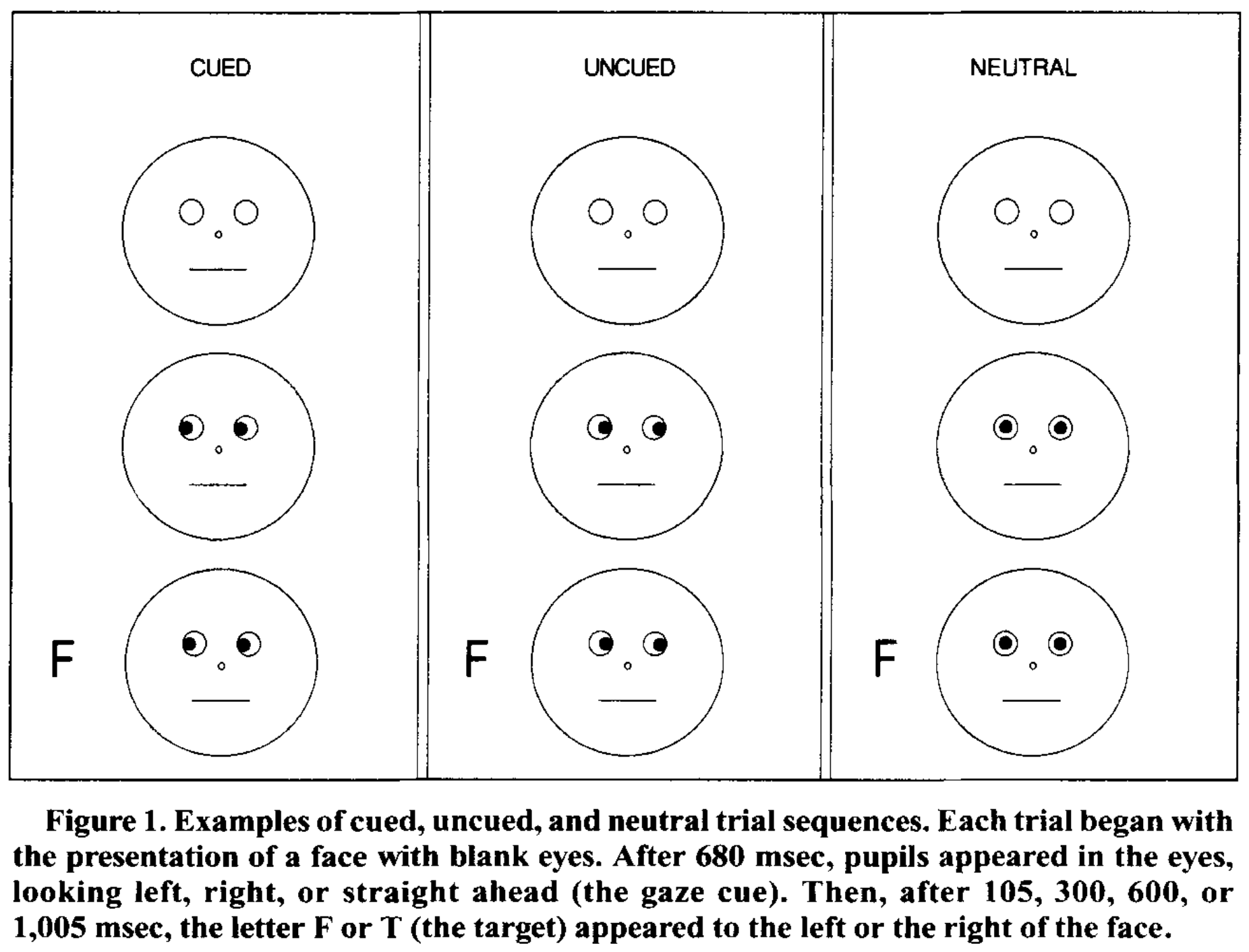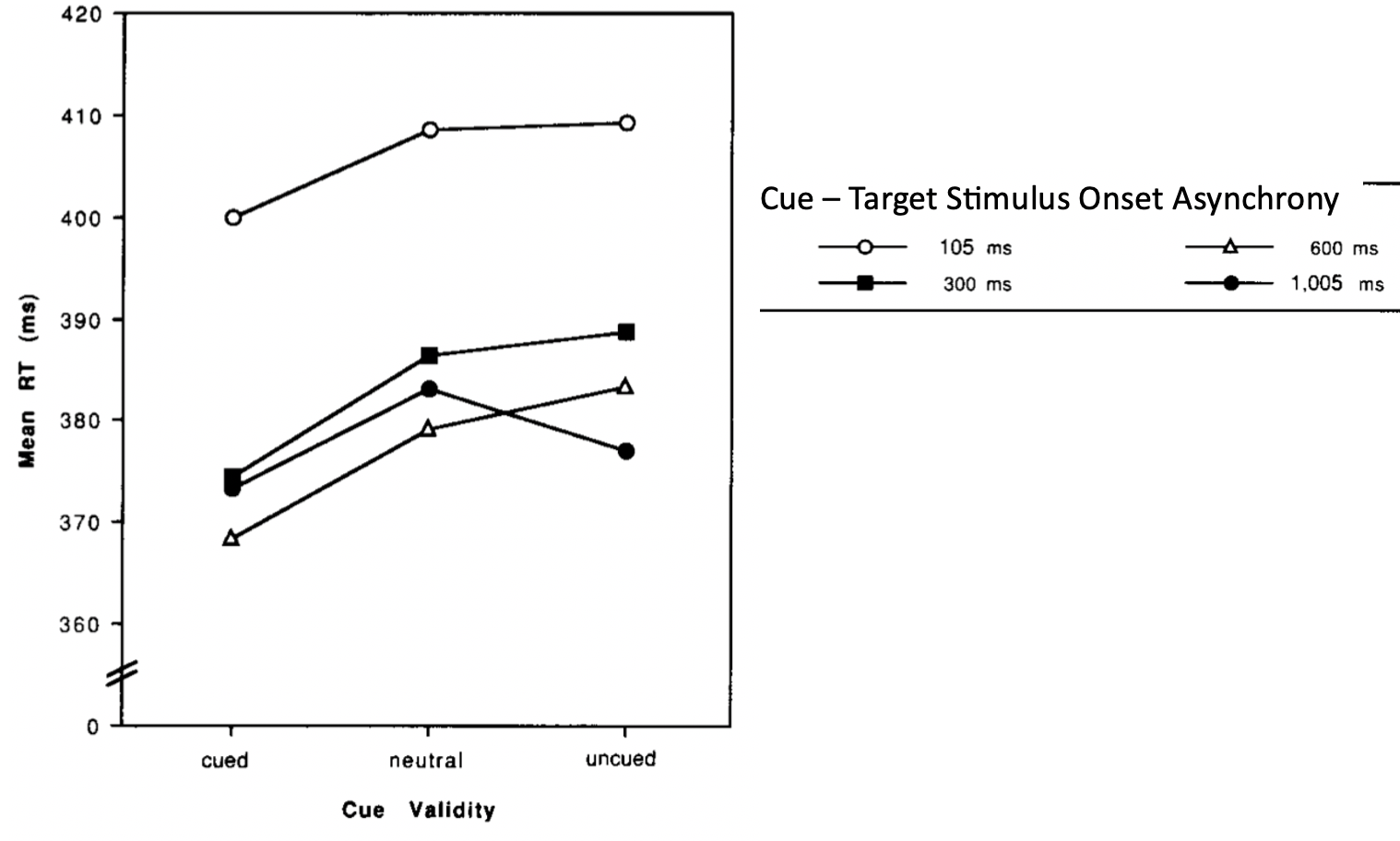Chapter 12 Attentional cuing
An attentional cue is something that directs one’s attention to something.
Posner, Snyder, and Davidson (1980) showed that when a location is cued, participants perform better at processing things in that location. This is because the participants attentionally selected that location.

Some cuing is almost purely bottom-up, while other cases of cuing are a combination of bottom-up and top-down. Let’s explore some interesting cases of cuing.
Because babies don’t know anything, they can’t go around directing their attention the location of food and other important things based on their knowledge of where they might be, or even what those things look like! They have to rely on bottom-up attention, so this is often used by caregivers to direct the baby’s attention. At two months old for example, many babies will turn their attention to a sound.
12.1 Side-eye or gaze cuing experiment: babies
The eyes play an important role in human communication; they are very expressive.

Figure 12.1: A clip from the TV show ‘Good girls’.
Most humans start interpreting others’ eyes very early. Babies will not only turn their attention in response to the bottom-up cue of a sound, but also they learn to use the cue of others’ eyes.
👀
Babies’ attention can be cued by the direction of adults’ gaze. This was documented scientifically by Hood, Willen, and Driver (1998), who tested 16 infants between 10 and 28 weeks old.

It might be a bit hard to see in the above image, but on the screen before the probe, the eyes of the face are looking to the left. In half of trials, they looked to the left like that, and in half of trials to the right. After that face disappeared, a rectangle suddenly appeared on one side. The sudden appearance of the rectangle tends to attract the infants’ attention.
The study’s question was: would the frequency with which the rectangle attracted the infants’ attention be affected by the direction the eyes before were looking in?
There were two kinds of trials:
- Congruent trials: the rectangle was on the side the eyes pointed at.
- Incongruent trials: the rectangle appeared opposite the side that the eyes were pointing at.
Usually, when the rectangle appeared, the babies looked at it (bottom-up attention). When the baby didn’t look at the rectangle, the researchers scored that as an “error”. The babies made fewer errors in the congruent condition than in the incongruent condition.

From this result, the researchers inferred that the face’s gaze direction often directed the babies’ attention.
Eye gaze is classifed as a top-down attentional cue. The bottom-up attentional cues are all things that cause attention to shift to the cue’s location. Eye gaze directs your attention somewhere else. This requires interpretation likely involving limited-capacity (bottlenecked) processing at higher levels of the brain. After the cue is interpreted, top-down attention works to direct attention in the direction of the eyes.
12.2 Side-eye or gaze cuing experiment: adults
For adults too, following the gaze of others can be important. In evolutionary history, it made sense to look in the direction other people and animals were looking, because often what they were looking at was important, such as a possible threat, or a food source.
Friesen and Kingstone (1998) conducted an experiment much like that done on the babies. Here are the stimuli they used:

The experiment showed the participants the stimuli at a number of different intervals between cue (cartoon face) and the presentation of the letter. That interval from onset of the cue to onset of the letter is called the “stimulus onset asynchrony”. The task of the participants was to hit a key to indicate whether the letter presented was an F or a T. The variable of interest to the researchers was how long it took the participant to hit the key. The idea is that if the cue directs the participants’ attention toward the letter, the participant will respond more quickly. But the participants were informed that the direction in which the eyes looked was not predictive of the location or identity of the target letter or of when it would appear. Thus, the participants didn’t have any reason to voluntarily move their attention in the direction of the eyes.
The plot below shows the average response time for trials where the participant typed the correct key.

- How was the response time different in the cued conditions compared to the uncued conditions?
- What condition yielded the slowest responses?
- Why did that condition yield the slowest responses?
These eye cuing effects may be even stronger with a person in the real world. The magician and pickpocketing artist Apollo Robbins explains how he uses eye cuing in this video (I’ve set it to begin playing at the relevant part).